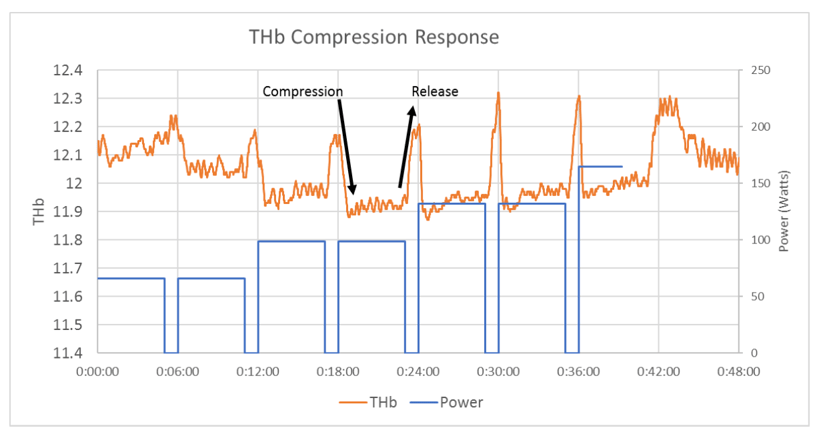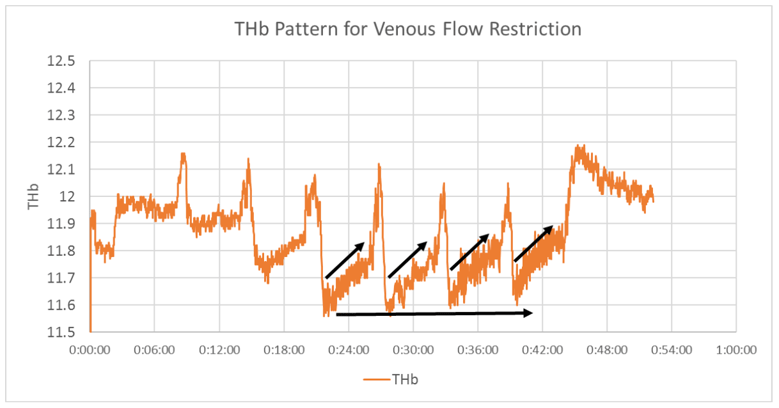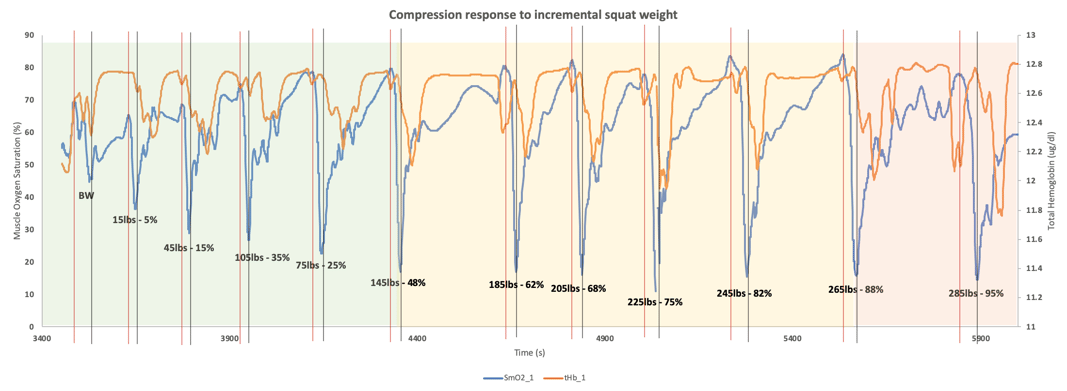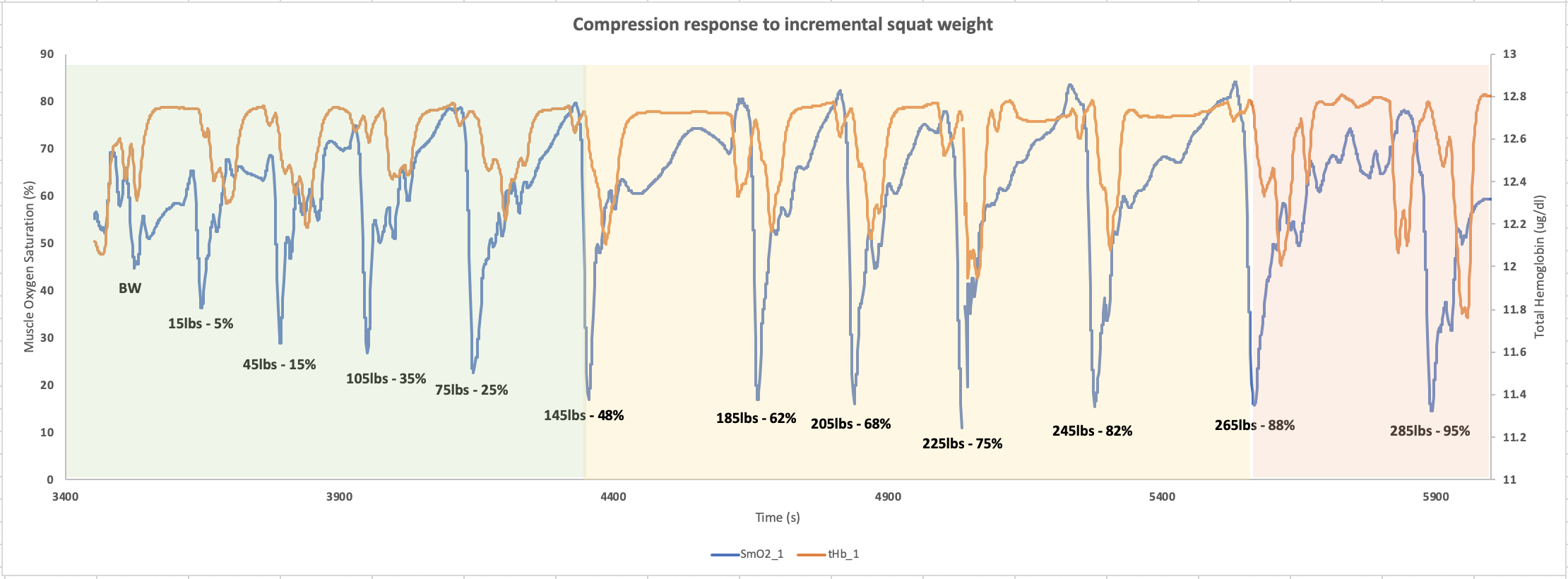Assessment - Occlusion Response to Strength Training
Skeletal muscle oxygenation response during training/assessments can give great insights to how the body is responding to the stimulus it is encountering. Over the past posts I have outlined how Moxy can be used to Autoregulate Sprint Interval Training and Strength Training, in this post I want to detail a Strength Assessment used/created by Evan Peikon at Training Think Tank to determine the best rep ranges for strength and hypertrophy based on your individual physiology using Moxy. The goal. The goal of the strength assessment is to evaluate where different occlusion trends are occurring. By honing in on what intensity an athletes’ body shifts from compression, to venous, and venous to arterial occlusion, you can better understand which weight ranges will most likely provide the physiologic adaptations that are being pursued.
Basic blood flow responses. In order to interpret the data from the assessment, an understanding of how the total hemoglobin (tHb) curve responds to load must first occur. There are 3 ways that tHb can respond to load during training. The first, a compression response, is shown in figure 1. During a compression response the vessels supplying the blood to the muscle are compressed but not completely blocked leading to a decrease in tHb until the load is released. Compression responses typically occur between (0-30%)* of 1 Rep Max (1RM).

The second response is a venous occlusion shown in figure 2. During a venous response the veins of the muscle are completely compressed, allowing no outflow of blood to occur, these responses start with a decrease in tHb that slowly increases throughout the interval/set and typically occur between (30-70%)* of 1RM.

The third and final response is an arterial occlusion, during an arterial occlusion, both the artery and vein of the muscle are completely compressed, therefore tHb stays completely flat even though oxygenation is dropping. Typically, this response occurs at intensities > 70%* 1RM. *NOTE: Delivery limited athletes might get compression at 15% venous at 25% arterial at 60%. Respiratory limited athletes will be skewed upwards of the normal ranges.
The Strength Assessment. Very simply the strength assessment involves doing sets of 5 reps at increasingly heavier loads with as much rest as possible. For example, I was interested to see how my legs respond to squatting. My 1RM is ~300lbs (when going down to 90 degrees) and I wanted to move up in weight in increments of about 10% (5% at the end) so this assessment looked like table 1:

Table 1: Strength Assessment layout and Analysis Summary
The SmO2 and tHb responses are shown in Figure 3. Figure 3 is highlighted where different occlusion responses are occurring (green for compression, yellow for venous occlusion, and red for arterial occlusion), sometimes it’s challenging to see/determine which occlusion response is occurring but overall this gives a pretty good idea of how my musculature is contracting, and what that does to the flow of blood to the muscle throughout each set. The red lines indicate the start of the set, the black lines indicate the end of the set. The large takeaway is that compression responses happen between ~0 – 48%, venous occlusions occur from ~48 – 88% and arterial occlusion occurs > 88%.

Interpretation/Conclusion. Muscular tension and hypoxia are thought to work hand-in-hand to produce hypertrophy. Therefore, if muscular tension is high in the muscle but there isn’t enough hypoxic response it will be hard to elicit a hypertrophic response to strength training. Typically, athletes who possess pulmonary limitations struggle to put on muscle mass, this is speculated to be due to this lack in hypoxic response at typical training ranges for hypertrophy. As an athlete, it has always been challenging for me to gain muscle mass, and this strength assessment might be one of the pieces to figuring out why. As I don’t occlude fully until upwards of 88% doing any reps lower than this weight simply won’t provide enough hypoxic stimulus to elicit change. Using this assessment as a guide, if I were to pursue hypertrophy as a main goal of training, I would want to complete most of my training above ~88% 1RM.

